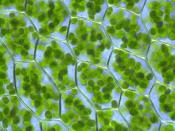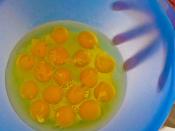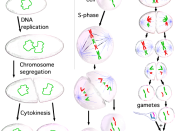Within all organisms, cells divide to produce new cells, each of which requires the genetic information found in DNA . Organisms could not grow or function properly if the genetic information encoded in DNA was not passed from cell to cell . DNA is packaged into structures called chromosomes . Every chromosome in a cell contains many genes, and each gene is located at a particular site on the chromosome . Simply splitting the DNA of a dividing cell between two new cells would lead to disaster .The two new cells would have different instructions and each subsequent generation of cells would have less and less genetic information to work with .Therefore, each new cell needs a complete copy of an organism's genetic information to function properly .
Two events are required for successful cell reproduction. First, the "parent" cell must ensure that each new "daughter" cell receives a complete copy of its hereditary information .
This information is transmitted in the form of complex molecules called DNA, and directs the various activities of the cell throughout its lifetime . The second requirement is the partitioning of cytoplasm between the two daughter cells .
Most cells divide at some time during their life cycle, and some divide dozens of times before they die. Organisms rely on cell division for reproduction, growth, repair and replacement of damaged or worn out cells . The more complex process of mitosis, which also produces two genetically identical cells from a single cell, is used by many unicellular eukaryotic organisms for reproduction . All multicellular animals, plants, fungi, and protists, which begin life as single cells, carry out mitosis to develop into complex organisms containing billions of cells . In the human body, for example, an estimated 25 million mitotic cell divisions occur every second...


